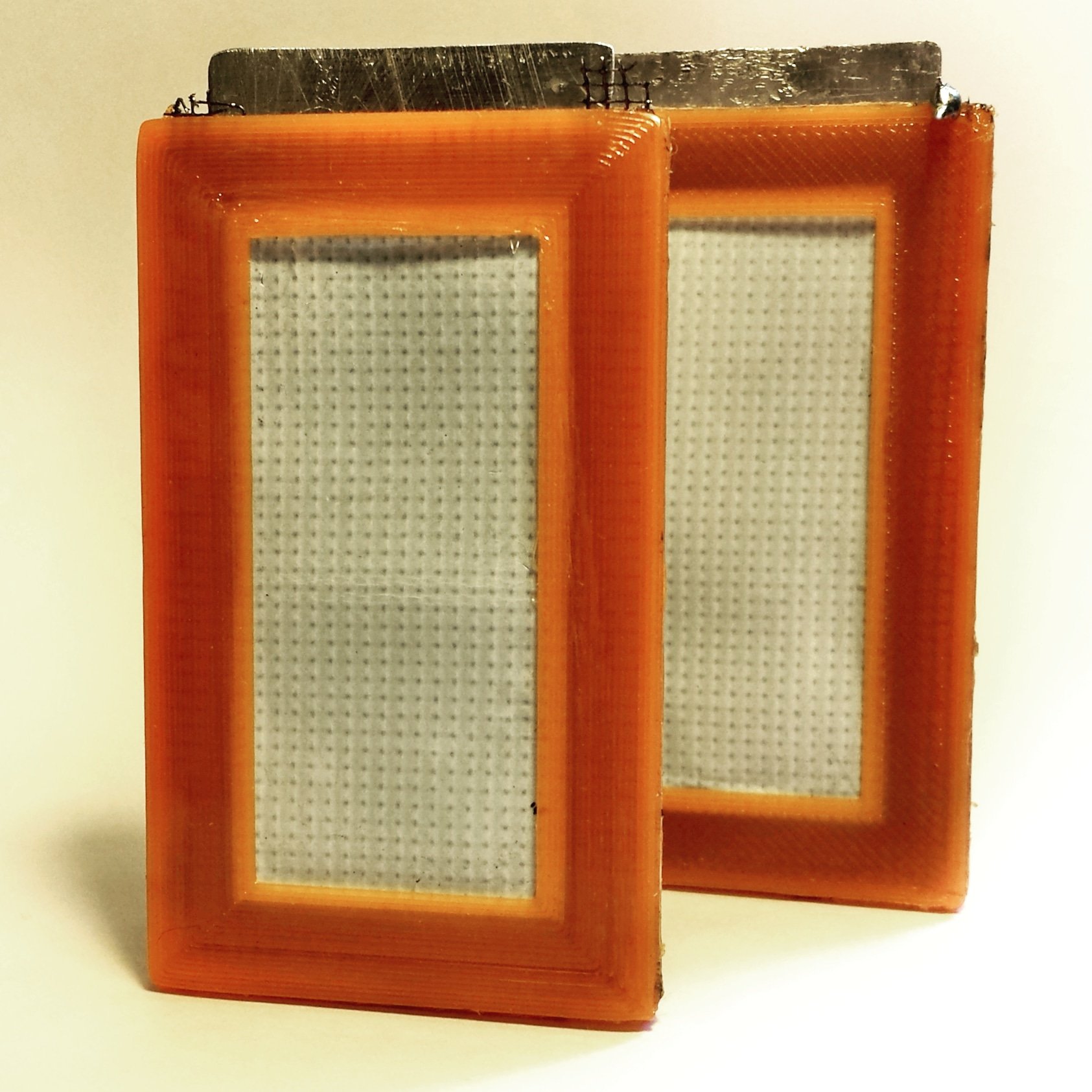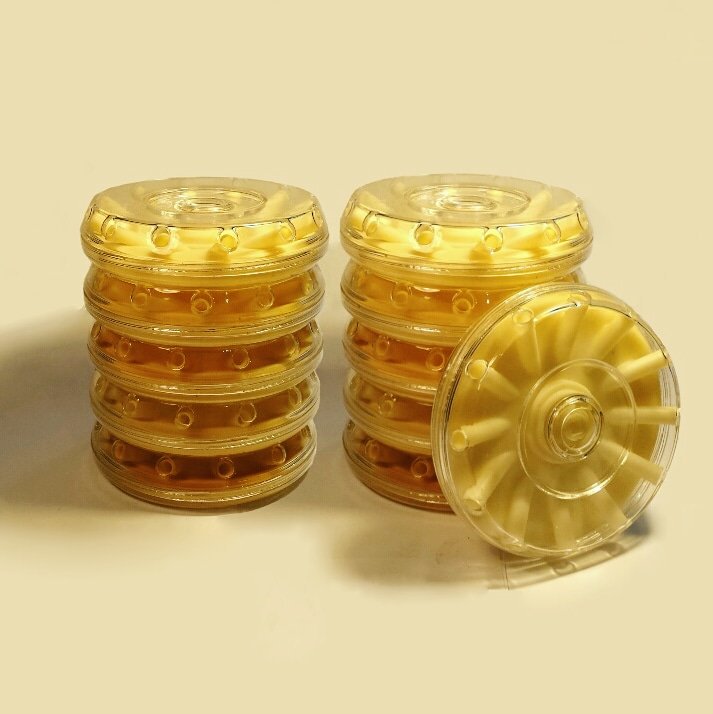In 1999, at the peak of Hydrogen fuel cell company start ups in California he left BAe to start his own fuel cell company. “My old boss at Rolls Royce pointed out that the Hydrogen needed to come from somewhere. So I looked at other technologies and found metal-air,”he says.
Technically described as “(Al)/air” batteries, these are the — almost — untold story from the battery world. For starters, an aluminum-air battery system can generate enough energy and power for driving ranges and acceleration similar to gasoline-powered cars.
Sometimes known as “Metal-Air” batteries, these have been successfully used in “off-grid” applications for many years, just as batteries powering army radios. The most attractive metal in this type of battery is aluminum because it is the most common metal on Earth and has one of the highest energy densities.
Think of an air-breathing battery which uses aluminum as a “fuel.” That means it can provide vehicle power with energy originating from clean sources (hydro, geothermal, nuclear etc.). These are the power sources for most aluminum smelters all over the world. The only waste product is aluminum hydroxide and this can be returned to the smelter as the feedstock for — guess what? — making more aluminum! This cycle is therefore highly sustainable and separate from the oil industry. You could even recycle aluminum cans and use them to make batteries.
Imagine that — a power source separate from the highly polluting oil industry.
“I rented a lab, read everything on it and then turned back into a Development Engineer, which means: thinking, making, testing and tweaking until you find answers. One or two bolts from the blue and I saw a massive difference on one test,” says Jackson.
But hardly anyone was using them in mainstream applications. Why?
Aluminum-air batteries had been around for a while. But the problem with a battery which generated electricity by “eating” aluminum was that it was simply not efficient. The electrolyte used just didn’t work well.
This was important. An electrolyte is a chemical medium inside a battery that allows the flow of electrical charge between the cathode and anode. When a device is connected to a battery — a light bulb or an electric circuit — chemical reactions occur on the electrodes that create a flow of electrical energy to the device.
When an aluminum-air battery starts to run, a chemical reaction produces a “gel” by-product which can gradually block the airways into the cell. It seemed like an intractable problem for researchers to deal with.
But after a lot of experimentation, in 2001, Jackson developed what he believed to be a revolutionary kind of electrolyte for aluminum-air batteries which had the potential to remove the barriers to commercialization.
“Everything was steady, the hydrogen and gel were almost gone but the power was a lot better.”
His specially developed electrolyte did not produce the hated gel that would destroy the efficiency of an aluminum-air battery. For Jackson, it seemed like a game-changer: “All I needed to do was to tell the government. ‘Simple’, I thought.”
The breakthrough — if proven — had huge potential. The energy density of his battery was about eight times that of a lithium-ion battery. He was incredibly excited. Then he tried to tell politicians…
Despite a detailed demonstration of a working battery to Lord “Jim” Knight in 2001, followed by email correspondence and a promise to “pass it onto Tony (Blair),” there was no interest from the U.K. government.
And Jackson faced bureaucratic hurdles. The U.K. government’s official innovation body, Innovate UK, emphasized lithium battery technology, not aluminum-air batteries.
He was struggling to convince public and private investors to back him, such was the hold the “lithium battery lobby” had over the sector.
This emphasis on lithium batteries over anything else meant U.K. the government was effectively leaving on the table a technology which could revolutionize electrical storage and mobility and even contribute to the fight against carbon emission and move the U.K. toward its pollution-reduction goals.
Disappointed in the U.K., Jackson upped sticks and found better backing in France, where he moved his R&D in 2005.
Finally, in 2007, the potential of Jackson’s invention was confirmed independently in France at the Polytech Nantes institution. Its advantages over Lithium Ion batteries were (and still are) increased cell voltage. They used ordinary aluminum, would create very little pollution and had a steady, long-duration power output.
As a result, in 2007 the French Government formally endorsed the technology as “strategic and in the national interest of France.”
At this point, the U.K.’s Foreign Office suddenly woke up and took notice.
It promised Jackson that the UKTI would deliver “300%” effort in launching the technology in the U.K. if it was “repatriated” back to the U.K.
However, in 2009, the U.K.’s Technology Strategy Board refused to back the technology, citing that the Automotive Council Technology Road Map “excluded this type of battery.” Even though the Carbon Trust agreed that it did indeed constitute a “credible CO2-reduction technology,” it refused to assist Jackson further.
Meanwhile, other governments were more enthusiastic about exploring metal-air batteries.
[…]
Jackson tried to tell the U.K. government they were making a mistake. Appearing before the Parliamentary Select Committee for business-energy and industrial strategy, he described how the U.K. had created a bias toward lithium-ion technology which had led to a battery-tech ecosystem which was funding lithium-ion research to the tune of billions of pounds. In 2017, Prime Minister Theresa May further backed the lithium-ion industry.
Jackson (pictured below) refused to take no for an answer.
He applied to U.K.’s Defence Science and Technology Laboratory. But in 2017 they replied with a “no-fund” decision which dismissed the technology, even though DSTL had an actual programme of its own on aluminum-air technology, dedicated to finding a better electrolyte, at Southampton University.
Jackson turned to the auto industry instead. He formed his company MAL (branded as “Metalectrique“) in 2013 and used seed funding to successfully test a long-range design of power pack in its laboratory facilities in Tavistock, U.K.
Here he is on a regional BBC channel explaining the battery:
He worked closely with Lotus Engineering to design and develop long-range replacement power packs for the Nissan Leaf and the Mahindra Reva “G-Wiz’ electric cars. At the time, Nissan expressed a strong interest in this “Beyond Lithium Technology” (their words) but they were already committed to fitting LiON batteries to the Leaf. Undeterred, Jackson concentrated on the G-Wiz and went on to produce full-size battery cells for testing and showed that aluminum-air technology was superior to any other existing technology.
In tests, Jackson’s Aluminium-Air power technology could create a 1,500 mile range battery with a 90 second swap system. The benefits are obvious: Cost effective for the driver; safe & CO2 free; recyclable and reusable; and with an £0.08 / mile cost to driver. The batteryis also low cost: just £60/kWh (Battery Price to OEM).
[…]
The advantages of aluminum-air technology are numerous. Without having to charge the battery, a car could simply swap out the battery in seconds, completely removing “charge time.” Most current charging points are rated at 50 kW which is roughly one-hundredth of that required to charge a lithium battery in five minutes. Meanwhile, hydrogen fuel cells would require a huge and expensive hydrogen distribution infrastructure and a new hydrogen generation system.
But Jackson has kept on pushing, convinced his technology can address both the power needs of the future, and the climate crisis.
Last May, he started getting much-needed recognition.
The U.K.’s Advanced Propulsion Centre included the Metalectrique battery as part of its grant investment into 15 U.K. startups to take their technology to the next level as part of its Technology Developer Accelerator Programme (TDAP). The TDAP is part of a 10-year program to make U.K. a world-leader in low-carbon propulsion technology.
The catch? These 15 companies have to share a paltry £1.1 million in funding.
And as for Jackson? He’s still raising money for Metalectrique and spreading the word about the potential for aluminum-air batteries to save the planet.
Heaven knows, at this point, it could use it.
Source: Negative? How a Navy veteran refused to accept a ‘no’ to his battery invention | TechCrunch
What happens when it runs out of juice? You replace it with a new one while the old one gets recycled. At the beginning of the electric car era when charging infrastructure was nonexistent, the idea of swapping spent batteries for fully charged new ones was considered feasible. Jackson says such a thing could be the future, with his batteries/fuel cells sold at grocery stores and retail outlets. He says the process of disconnecting the old one and connecting the new one will take about 90 seconds.
But is it tin foil hat time? Is this story just another example of some crackpot inventing some radical new product that defies conventional physics, like cold fusion? Lots of people think so, and in fact Jackson says powerful forces have attempted to prevent his idea from reaching a larger audience. But an independent evaluation by the UK Trade and Investment agency in 2017 said Jackson’s invention was a “very attractive battery” based on “well established’” technology, and that it produced much more energy per kilogram than standard electric vehicle types, according to a report in the Daily Mail.
Some comparisons are in order. A Tesla Model S can drive up to 370 miles on a single charge. Jackson says if you drove the same car with an aluminum-air cell that weighed the same as the Tesla’s lithium-ion battery, it would have a range of 2,700 miles. Aluminum-air cells also take up less space. If that same Tesla were fitted with an aluminum-air fuel cell the same size as its current battery, it could run non-stop for 1,500 miles.
[…]
Jackson has also secured a £108,000 grant for further research from the Advanced Propulsion Center, a partner of the Department for Business, Innovation and Skills. His technology has been validated by two French universities. He says: “It has been a tough battle but I’m finally making progress. From every logical standpoint, this is the way to go.”
Austin Electric has three targets for the new batteries — the three-wheeled tuk-tuks used for transportation in many countries such as Pakistan, electric bicycles with far more range than current models, and a program that will convert front wheel drive cars with internal combustion engines into hybrids by fitting aluminum-air batteries and motors to drive the rear wheels.
Jackson expects the conversion operation to start next year. He says the cost of each conversion will be £3,500 or about $4,000. He thinks this will be a proof of concept “stepping-stone” phase in the transition to aluminum-air batteries for all vehicles. “We are in discussions with two aircraft manufacturers. It’s not going to be suitable for jets. But it would work in propeller planes, and be suitable for short-haul passenger and cargo flights.”
https://cleantechnica.com/2019/10/20/uk-man-invents-aluminum-air-battery-in-his-garage/
It’s ridiculous that this invention is only now going into small scale production and only gets 108k for development. Considering this is relevant and the technology is really viable, this should be on the top of the agenda. What happens to li-ion batteries is melt and destroy the environment.

Robin Edgar
Organisational Structures | Technology and Science | Military, IT and Lifestyle consultancy | Social, Broadcast & Cross Media | Flying aircraft



